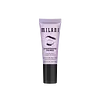What's inside
What's inside
 Key Ingredients
Key Ingredients

 Benefits
Benefits

No benefits
 Concerns
Concerns

 Ingredients Side-by-side
Ingredients Side-by-side

Isododecane
EmollientTrimethylsiloxysilicate
EmollientMica
Cosmetic ColorantHydroxystearic/Linolenic/Linoleic Polyglycerides
EmollientDimethicone
EmollientSynthetic Wax
AbrasiveDisteardimonium Hectorite
StabilisingTriethylhexanoin
MaskingTrihydroxystearin
Skin ConditioningSorbitan Sesquioleate
EmulsifyingVp/Eicosene Copolymer
C18-38 Alkyl Hydroxystearoyl Stearate
EmollientPropylene Carbonate
SolventEthylhexylglycerin
Skin ConditioningTriethoxycaprylylsilane
Tocopherol
AntioxidantCI 77891
Cosmetic ColorantCI 77492
Cosmetic ColorantCI 77491
Cosmetic ColorantIsododecane, Trimethylsiloxysilicate, Mica, Hydroxystearic/Linolenic/Linoleic Polyglycerides, Dimethicone, Synthetic Wax, Disteardimonium Hectorite, Triethylhexanoin, Trihydroxystearin, Sorbitan Sesquioleate, Vp/Eicosene Copolymer, C18-38 Alkyl Hydroxystearoyl Stearate, Propylene Carbonate, Ethylhexylglycerin, Triethoxycaprylylsilane, Tocopherol, CI 77891, CI 77492, CI 77491
Isododecane
EmollientTalc
AbrasiveMica
Cosmetic ColorantCyclopentasiloxane
EmollientDisteardimonium Hectorite
StabilisingTrimethylsiloxysilicate
EmollientTrihydroxystearin
Skin ConditioningPolyethylene
AbrasiveTriethylhexanoin
MaskingSorbitan Sesquioleate
EmulsifyingVp/Eicosene Copolymer
Dimethicone
EmollientDipalmitoyl Hydroxyproline
Skin ConditioningPhenoxyethanol
PreservativePEG-40 Stearate
EmulsifyingSynthetic Beeswax
Emulsion StabilisingPropylene Carbonate
SolventEthylhexylglycerin
Skin ConditioningWater
Skin ConditioningCI 77891
Cosmetic ColorantCI 77163
Cosmetic ColorantIron Oxides
Isododecane, Talc, Mica, Cyclopentasiloxane, Disteardimonium Hectorite, Trimethylsiloxysilicate, Trihydroxystearin, Polyethylene, Triethylhexanoin, Sorbitan Sesquioleate, Vp/Eicosene Copolymer, Dimethicone, Dipalmitoyl Hydroxyproline, Phenoxyethanol, PEG-40 Stearate, Synthetic Beeswax, Propylene Carbonate, Ethylhexylglycerin, Water, CI 77891, CI 77163, Iron Oxides
Ingredients Explained
These ingredients are found in both products.
Ingredients higher up in an ingredient list are typically present in a larger amount.
Ci 77891 is a white pigment from Titanium dioxide. It is naturally found in minerals such as rutile and ilmenite.
It's main function is to add a white color to cosmetics. It can also be mixed with other colors to create different shades.
Ci 77891 is commonly found in sunscreens due to its ability to block UV rays.
Learn more about CI 77891Dimethicone is a type of synthetic silicone created from natural materials such as quartz.
What it does:
Dimethicone comes in different viscosities:
Depending on the viscosity, dimethicone has different properties.
Ingredients lists don't always show which type is used, so we recommend reaching out to the brand if you have questions about the viscosity.
This ingredient is unlikely to cause irritation because it does not get absorbed into skin. However, people with silicone allergies should be careful about using this ingredient.
Note: Dimethicone may contribute to pilling. This is because it is not oil or water soluble, so pilling may occur when layered with products. When mixed with heavy oils in a formula, the outcome is also quite greasy.
Learn more about DimethiconeDisteardimonium Hectorite comes from the clay mineral named hectorite. It is used to add thickness to a product.
It can also help stabilize a product by helping to disperse other ingredients.
Hectorite is a rare, white clay mineral.
Learn more about Disteardimonium HectoriteEthylhexylglycerin (we can't pronounce this either) is commonly used as a preservative and skin softener. It is derived from glyceryl.
You might see Ethylhexylglycerin often paired with other preservatives such as phenoxyethanol. Ethylhexylglycerin has been found to increase the effectiveness of these other preservatives.
Isododecane is a fragrance, emollient, and solvent.
As an emollient, it helps your skin stay soft and hydrated. Emollients help trap moisture into your skin.
Isododecane's role as a solvent makes it a great texture enhancer. It spreads smoothly on skin and does not leave a sticky feeling behind. Isododecane also helps prevent color transfer in makeup products.
Isododecane is not absorbed into skin.
Learn more about IsododecaneMica is a naturally occurring mineral used to add shimmer and color in cosmetics. It can also help improve the texture of a product or give it an opaque, white/silver color.
Serecite is the name for very fine but ragged grains of mica.
This ingredient is often coated with metal oxides like titanium dioxide. Trace amounts of heavy metals may be found in mica, but these metals are not harmful in our personal products.
Mica has been used since prehistoric times throughout the world. Ancient Egyptian, Indian, Greek, Roman, Aztec, and Chinese civilizations have used mica.
Learn more about MicaThis ingredient is a solvent. It helps dissolve active ingredients and alter the texture of products.
Propylene Carbonate is commonly used in makeup and with clay, such as montmorillonite or bentonite.
Studies show this ingredient to be safe for cosmetics. When it is undiluted, it can cause skin irritation. (It is always diluted in skincare and makeup). This ingredient is water-soluble.
Propylene Carbonate is created from propylene glycol and carbonic acid.
Learn more about Propylene CarbonateSorbitan Sesquioleate is derived from sorbitol and oleic acid. It is an emulsifier and prevents ingredients from separating.
Specifically, this ingredient is a water-in-oil emulsifier, meaning it helps water dissolve into oil.
Some studies suggest this ingredient may cause irritation in some people. If you are unsure, it is best to patch test.
This ingredient may not be Malassezia folliculitis, or fungal-acne safe.
Learn more about Sorbitan SesquioleateTriethylhexanoin is created from glycerin and 2-ethylhexanoic acid. It is a solvent and emollient.
As a solvent, Triethylhexanoin helps dissolve ingredients to stable bases or help evenly distribute ingredients throughout the product.
It is also an emollient and helps condition the skin.
Learn more about TriethylhexanoinThis ingredient comes from Hydroxystearic Acid, a fatty acid, and glycerin. It is used to thicken oils.
Due to its fatty acid content, it is a natural emollient.
Creating trihydroxystearin involves using a chemical reaction between hydrogen and castor oil.
This ingredient may not be Malassezia folliculitis safe.
Learn more about TrihydroxystearinThis silicone is an emollient. Emollients create a thin film on the skin to prevent moisture from escaping.
It is not soluble in water and helps increase water-resistance in products.
According to a manufacturer, it can blend seamlessly with silicone oils, such as Cyclopentasiloxane.
Learn more about TrimethylsiloxysilicateWe don't have a description for Vp/Eicosene Copolymer yet.